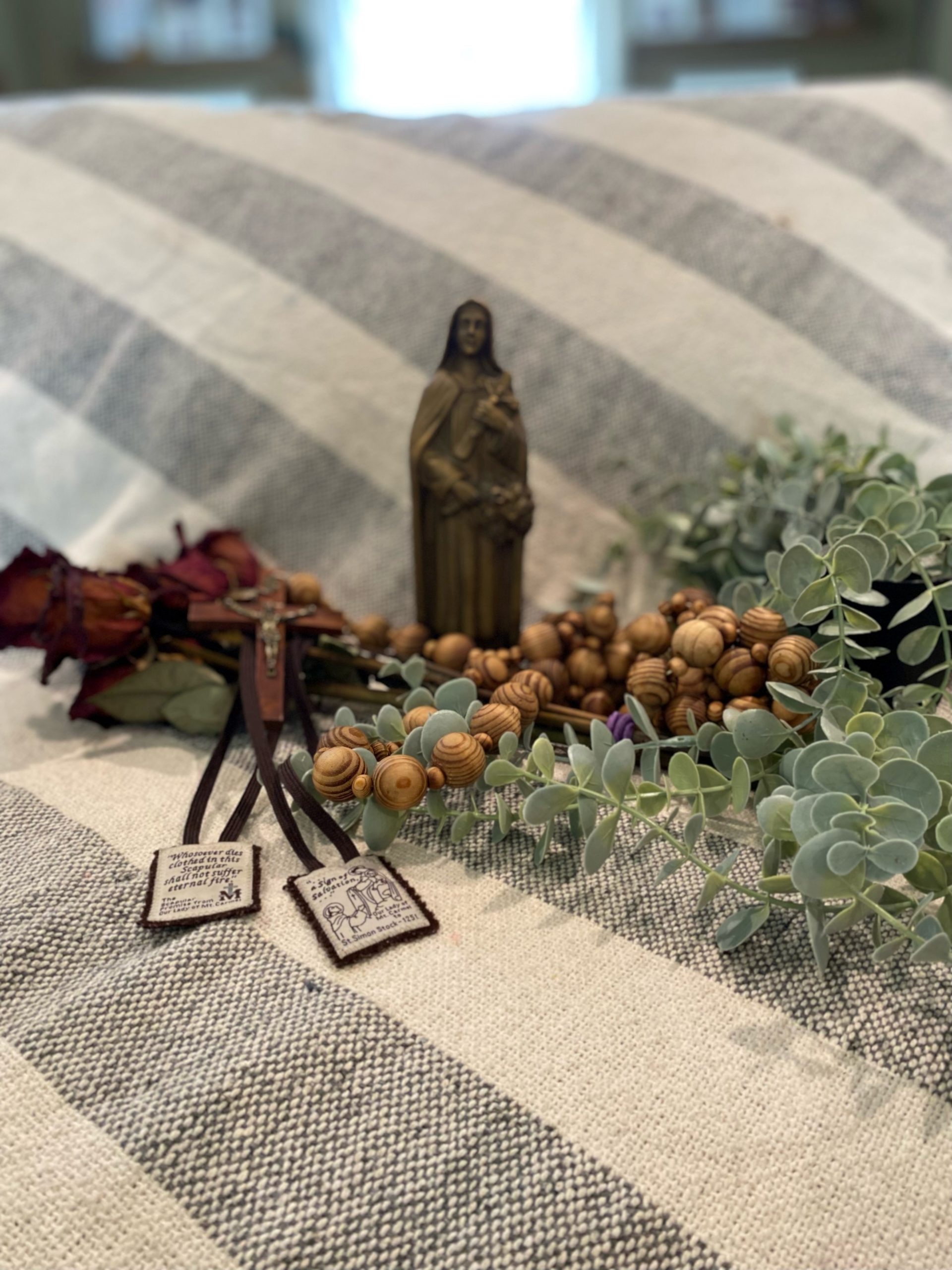Catholic Family

The Church commemorates the Feast of Our Lady of Mount Carmel on July 16. (Photo by Kate Kelleher Junk)
The Prophet Elijah’s powerful example of adherence to God’s law and experience of the Lord’s presence on Mount Carmel inspired a community of believers that spans the globe, including the Discalced Carmelite Friars at Holy Hill. On July 16, the Church commemorates the feast of Our Lady of Mount Carmel, and we have a unique opportunity to recommit ourselves to our Lady.
St. Therese of Lisieux said, “Miss no single opportunity of making some small sacrifice, here by a smiling look, there by a kindly word; always doing the smallest right and doing it all for love.”
Perhaps the best-known of the Carmelite saints is St. Therese of Lisieux. As featured in her autobiography, “Story of a Soul,” the little flower’s little way reminds us that a path to holiness and even sainthood can exist through small acts performed with great love. We can bring about the Kingdom of God right where we are, in our homes, and with the people closest to us. St. Therese was made a Doctor of the Church in 1997.
Another powerful Carmelite is St. Teresa Benedicta of the Cross. Born Edith Stein to a Jewish family in 1891, this atheist-turned-convert, saint and martyr is a powerful, bold example for women today. In a time when women, especially Jewish women, were not permitted to be academics, she wrote and acted as a professor until the Nazi regime came to power. She was put to death at Auschwitz. Her writings on women and philosophy were so profound they inspired another future saint — Pope John Paul II, who at her canonization Mass in 1998 said, “This woman had to face the challenges of such a radically changing century as our own.” She greatly influenced his work on the feminine genius. Though she lived a celibate life, she noted that: “Each woman who lives in the light of eternity can fulfill her vocation, no matter if it is in marriage, in a religious order, or in a worldly profession.”
That’s right, mamas, we are not kept from the work of the Kingdom by nature of our families. Rather, strengthened by the Holy Spirit’s graces bestowed on us in baptism and confirmation and fortified by regular reception of the Holy Eucharist, we are Christ to our loved ones and the keepers of our domestic churches.
If you’ve spent a lot of time around Catholics, chances are you’ve seen the brown Scapular sticking out of someone’s shirt at least once. This small piece of cloth is a modified version of Mary’s own garment and acts as a minor mortification for those who wear it. It symbolizes the special protection of her children. It seems as though I was destined to a special devotion here, as I attended a Carmelite High School (Mundelein, Illinois) and was born and baptized on the feast of a Carmelite nun, but I did not find it until my 30s.
According to Franciscan Media, there is a tradition — which may or may not be historical — that Mary appeared to St. Simon Stock, a leader of the Carmelites, and gave him a scapular, telling him to promote devotion to it.
The devotion comes with promises that Our Lady will protect her children and hasten to aid them if they remain in purgatory after death: “Whoever dies invested with this Scapular shall be preserved from the eternal flames. It is a sign of salvation, a sure safeguard in danger, a pledge of peace and of my special protection until the end of the ages.”
The Confraternity of the Brown Scapular, which requires enrollment by a priest, has three conditions:
- Wear the Brown Scapular continuously. (Removal for bathing is allowed, taking it off out of vanity is not.)
- Observe chastity according to one’s state in life (married/single).
- Recite daily the Little Office of the Blessed Virginor
- Observe the fasts of the Church together with abstaining from meat on Wednesdays and Saturdays;
- With permission of a priest, say five decades of Our Lady’s Most Holy Rosary; or
- With the approval of a priest, substitute some other good work.
I tell myself I will get to a point where I can recite the Little Office, but in my current state in life, with four children under the age of 9, the rosary remains the most accessible way for me to spend time in prayer each day. I recite it in bed on the days I can’t get five decades in before my head hits the pillow. On the rare occasions I fall asleep praying, I am confident that my guardian angel and the saints I have asked to pray with me finish in my stead.
Any priest can enroll you with a simple rite if you feel called to join the confraternity. (https://www.sistersofcarmel.com/brown-scapular-information.php)
If you visit the Basilica and National Shrine of Mary Help of Christians at Holy Hill, Carmelite Friars are available to bless items and enroll you in the confraternity at the following times/locations: main entrance desk (outside the Gift Store): Sundays from 8:30 a.m. to noon and from 1:30 to 4:30 p.m.; and monastery office: Monday from 10:15 to 11:30 a.m. and 1 to 3:30 p.m. and Tuesday through Friday from 9:15 to 11:30 a.m. and 1 to 3:30 p.m.
No matter how you commemorate this feast, take the words of St. Teresa of Jesus, Carmelite, mystic and the first woman to be named a Doctor of the Church, to heart: “Trust God that you are where you are meant to be.” God put you on this earth and in your family for a reason, and his judgment is perfect.
Our Lady of Mount Carmel and all you Holy Carmelite men and women, pray for us.
